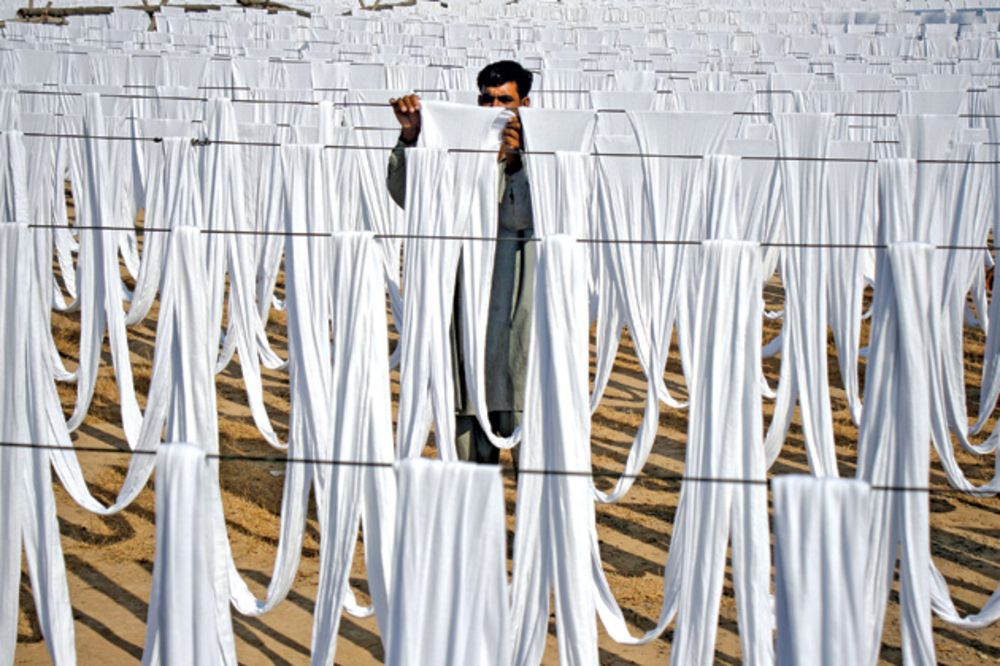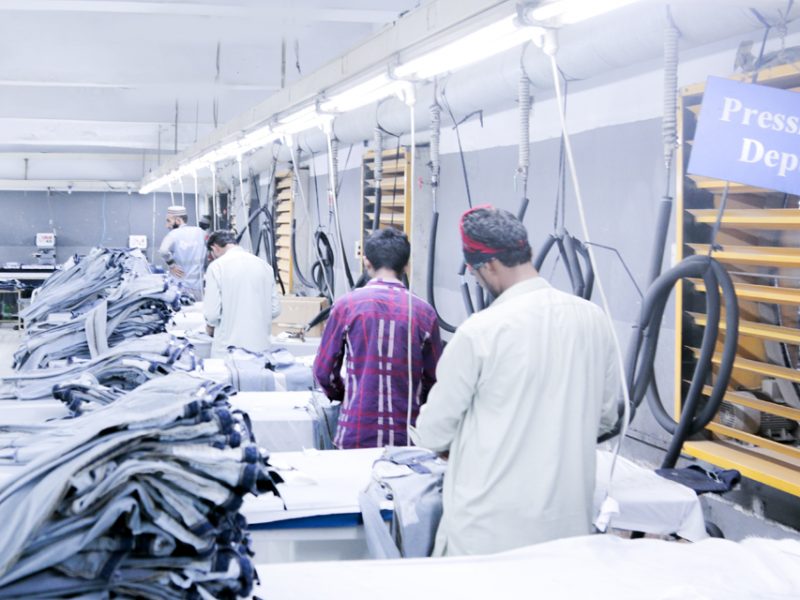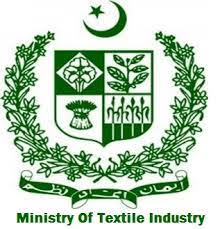Textile industry in Pakistan
Pakistan is the eighth biggest exporters of textile goods in Asia. It is the fourth largest manufacturer and the third-largest purchaser of cotton. It comprises 46% of the total manufacturing sector and it also gives occupation to 40% of the overall workforce. Around 5% of the aggregate companies of textile are registered on the stock exchange of Pakistan.
Pakistan’s textile industry is ranked amongst the topmost in the whole wide world. Cotton-based textile materials add over sixty percent to the whole exports, accounts for forty-six percent of the aggregate business manufacturing, and provide worker’s employment to around forty-five percent in the manufacturing workforce. The accessibility of low-cost labor force in addition to simple raw cotton such as raw material for the material industry is playing the most important part in the progression of the Cotton in Pakistan textile industry
Pakistan has a lot of nosiness of textiles, and around thirty percent of Pakistan’s workforce is depending upon the textile sector. Subsequently, after India, China, and Bangladesh, Pakistan is the fourth leading producer and manufacturer of cotton in the whole world. There is a large spinning capability in Pakistan and it also plays a major and important part in the textiles. Wholesale Apparel Cloth Retailer, Textile Machinery and Mills Exporters and Textile Fiber Raw Material Importers of Textile Business from Pakistan
The Sector of Textile industry In Pakistan has a large effect on the economy of the business and other more economies which are contributing to the Pakistan GDP. it is backing the Pakistan industry by 57% To the Country Exports according to the Government of Pakistan Ministry of Textile Industry .
In Latest Ages, Cotton Yarn Textiles and Apparel Cloth Garment Remained the Foremost Attention Of The business of cloth. Because Of the Huge Volume of Agro Cotton Yarn Produce In The Country Its Fourth part In Across The World Subsequently after India And China. At hand, there remain So Many Textile Mill, Spinning Mill, Weaving and Knitting Mill, Textile Processing Unit, Textile Machinery, And Dyeing and Printing Industry have Industrialized Also developed in Former Five Year.
Pakistani Textile Industry is responsible for 9% Of the Global Textile Business Suppliers Necessities which are Mostly Situated next to Arab Nations, African Region, Latin America, East Europe, Canadian Market, and Some Southern Asia. Pakistan is ranked Figure ten in Textile Producers at the world. Special products like Cotton Yarn Material, Cotton Apparel Cloth Manufacturers
Pakistan’s economy depends largely on that one produced cotton and textile segments. The processing of cotton and industries of textile is in the constitution to just about parts of the nation’s manufacturing and industrial base, even though cotton is Pakistan’s foremost industrial harvest which is supplying precarious earnings to rural houses. Overall, the cotton-textile segments gives interpretation for 60% of GDP and 60% of export incomes.
Textile industry of Pakistan is contributing to more than sixty percent of the countries aggregate exports according to the economic survey of Pakistan of the ear 2012-2015. The percent is contributing to around six billion US Dollars. The ministry of financed issued an article in which they stated that the textile industry of Pakistan is itself establishes around four percent of the aggregate dimension of the total economy
In Asia, Pakistan is the eighth biggest exporters of products of fabric goods. Thread is the rudimentary Money making a yield of Pakistan. Textile goods are unique and most important and rudimentary social necessities as good as foodstuff. Pakistan is the third major exporter of cord of raw.
Low-priced manual labor and raw cotton are available in Pakistan. It is responsible for the occupation of thirty-eight percent of the labor power in the nation. This aggregates to a number of fifteen million. Nevertheless, the amount multi-skilled workers are very not as much of as likened to that of an untrained worker. Pakistan is the second-biggest supplier of cotton yarn with a twenty-six percent portion of the market international.
There are some problems faced by the textile industry of Pakistan. They are:
- Lack of study and growth in Pakistan
- Lack of Research and Development in Cotton Sector
- Absence of Update apparatus
- The growing cost of making
- Internal problems fake a Bigger Danger for textile industry of pakistan
- Consequence of price increases
- Energy calamity
- Crisis n electricity
- Gas deficiency
- Absence of new investment
- Raw material prices are high
There are some strengths and weaknesses of the textile industry of Pakistan. They are:
Strength:
- Self-sufficiency
- Industrialized elasticity
- Plenty of raw material creation
- Strategy capability
- Accessibility of cheap labor
Weakness:
- Extremely uneven segment
- Extraordinary dependency on cotton
- Lower production
- Deteriorating mill sector
- Technical oldness
Threats:
- New competitors: Pakistan has established new competitors such as India, Bangladesh, and china
- Phasing out of quota system: ration system is run by WTO, hence there is a danger that china plus India will get most of the share as Pakistan has low productivity of labor, high cost and not efficient manufacturing process.
There are some environmental issues as well: following are some,
- There are large volumes of wastage of water
- Using a different kind of chemicals
- There is water pollution
- There is gas pollution
- There is noise pollution
Nowadays, the price of doing business in Pakistan is much higher as compare to other district countries, which is resulting in the competition of the products made in Pakistani markets. At this current date, china and India are the biggest competitors of Pakistan. . Some Pakistani analyst and researchers believe that, if the Pakistani products are not made according to currents needs to people, and if the cost of doing the business is not at the same level with other Asian countries then the competition will have no value like our Pakistani products at some level.
List of the textile industry in Pakistan
There Are At Least 420 Textile Industries That Are Currently Working In Pakistan. Pakistan Has The Supply Chain For Most Of The Man-Made, Fabrics And Natural Yarns Which Include Cotton, Rayon, And Others. Pakistan Textile Industry Is Popular All Around Pakistan.Top10 Major Textile Industries And Presently Being Operated In Pakistan. They Are
- Fatah Textile Mills
- Chenab Limited
- Gull Ahmed Textiles Imbed
- Hussein Industries Limited
- Kohinoor Mills Limited
- Nish At Mills Limited
- Fatal Cloth Mills
- Safe Textile Limited
- National Silk And Rayon Mills Limited
- The Crescent Textile Mills Were Limited.
List of Textile Industry Jobs in Pakistan
There are a lot of textile industry jobs in Pakistan. Some of them are mentioned below
- Textile designer
- Textile converter
- Production, amazement
- Apparel manufacturing
- Color technologist
- Fashion designer
- Illustrator
- Interior and spatial designer
Ministry Of Commerce and Textile Industry
The mission statement of the ministry of commerce states that there is a need to put up with the growth of the textile sector in progressively competitive surroundings, through efficiently responding to the opportunities and challenges given by trade globalization and by providing a platform to the domestic industry of textiles for a jointly benefit.
According to the government of Pakistan’s ministry of commerce and the industry of textile, the sector of the Pakistani textile industry has a enormous influence on the business budget of Pakistan. The textile industry is contributing at least fifty-seven percent to the country’s exports. the main aim and focus of the cloth industry in current years has been fiber yarn textiles and apparel cloth garments.
There Are plenty of Textile Mill, Spinning Mill, Weaving and Knitting Mill, Textile Processing Unit, Textile Machinery, And Dyeing and Printing Industry Established and have taken evolution In Last 5 Years. Since there is a large amount of Agro cotton yarn production in Pakistan, it ranks on number fourth around the world after China and India
Ministry of commerce and the textile industry mission statement states that they want to be a credible, effective, and dynamic association that is producing and creating an empowering environment for maintainable growth for the whole industrial segment in Pakistan.
In today’s extremely competitive markets and environment, the textile division of Pakistan needs to be elevated and it needs to fade its supply chain, improve the efficiency, and take full advantage of value- addition so that the Pakistani textile market can be able to survive in this competitive market. The textile industry segment aims to enhance new skills, establish more competitive strategies so that the textile industry is unable to meet the current challenges and accomplish global effectiveness.
The textile minister of Pakistan gave the public a message that the sector of the textile industry in Pakistan is playing an integral part in sustaining Pakistan’s growth. It is contributing around fifty-eight percent to the aggregate exports of the country. The textile dividend is the most pivotal and prominent segment that contributes to the economic growth of Pakistan.
Furthermore, the textile sector plays a major role in employing the workers… around forty percent of the workforce is employed in this sector. according to the WTO posy quota situation, Pakistan a
According to the WTO post-quota situation, Pakistan is performing to become a necessary potential for fetching of an important power in the worldwide textile. However, the textile industry is facing some general issues such as a shortage of gas and electricity, and there is sometimes an overall recession in the Pakistani economy.
The Pakistani is making its textile sector more dynamic because it is well aware of the fact and much needed expected efforts are being made to make it more efficient and up to date as compared to its competitors.






